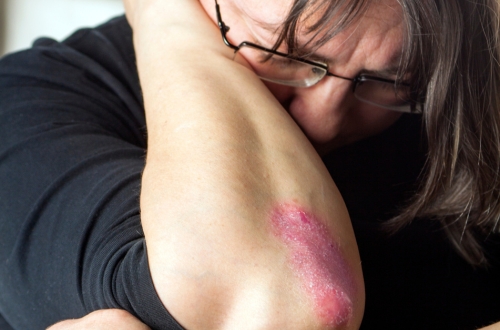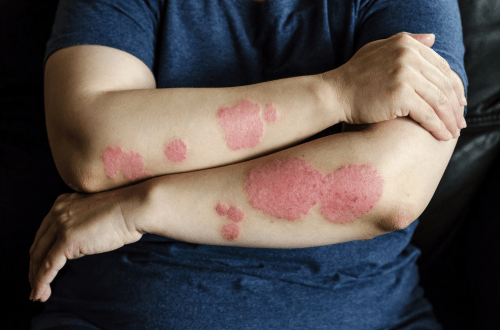All Skin Matters: Diversity in Dermatology Clinical Trials
Diversity in clinical trials is considered just as much of a necessity for ensuring social equality as it is for scientific accuracy in clinical research. This is no exception for dermatology clinical trials. By 2044, it’s estimated that more than half of all Americans will belong to a racial or ethnic group that is characterized by having skin of color. Yet, underrepresentation of ethnic and racial minorities in dermatology clinical trials continues to be a pervasive issue that has important consequences. Without addressing the concerning lack of diversity in this therapeutic area, we can’t overcome existing gaps in our understanding of how skin diseases affect different populations, which can then result in treatments that are less effective for certain populations, perpetuating health disparities.
The good news is researchers, pharmaceutical companies, and dermatology CROs (contract research organizations) do recognize the importance of diversity in clinical trials for skin diseases and are taking important steps to make it a reality. In this next article from TFS HealthScience CRO, we will discuss this critical issue, exploring the current state of diversity in dermatological research, the barriers to inclusive studies, and why dermatology clinical trials must reflect the full spectrum of human skin types and ethnicities.
Current State of Diversity in Dermatology Trials
Several systematic literature reviews have been conducted in recent years to understand the current state of diversity in dermatology clinical trials, revealing progress as well as persistent challenges. For example, in a 2022 review by Chen et al., the reporting of racial and ethnic population data in studies out of the United States (US) increased from 59.8% (2010-2015 data period) to 72.9% (2015-2020 data period). At the same time, however, they found that the actual representation of diverse populations in these studies remained the same over this ten-year period. The proportion of randomized clinical trials (RCT) including at least 20% non-White representation was 38.1% in both 2010-2015 (N = 97 RCTs) and 2015-2020 (N = 139 RCTs). Similarly, in a US-based review by Ferguson et al. (2022), the representation of patients who identified as African-American (8.8% to 8.4%), American Indian (0.11% to 0.13%), Pacific Islander (0.24% to 0.17%), and Hispanic (5.5% to 5.3%) did not increase significantly between 2005 and 2019, respectively.
This lack of progress is particularly pronounced in certain areas of dermatology, with psoriasis studies showing the least diversity. Most recently, the 2022 Chen review found only 12.1% of psoriasis studies recording over 20% of non-White participants, whereas Charrow et al. reported the same trend, but in 30.0% of psoriasis RCTs in their 2017 review. In contrast, 73.9% of acne studies and 91.7% of eczema studies were primarily made up of non-White participants in the US from 2010-2015. Interestingly, the pattern of underrepresentation in psoriasis studies seems to extend to gender as well, with only 29.5% of psoriasis studies including at least 45% female participants.
Overall, these statistics showcase a persisting gap in the representation of different ethnic and minority populations in dermatology clinical trials. Increased transparency about these numbers is important, but these studies also demonstrate how acknowledging the importance of diversity doesn’t easily translate to achieving diversity in study populations. Therefore, clinical research stakeholders, including sponsors and dermatology CROs, must implement targeted efforts to improve recruitment strategies and address barriers that prevent underrepresented groups from participating in clinical trials.
Barriers to Diversity in Dermatology Clinical Trials
Several barriers impede the road to achieving sustained diversity in dermatology clinical trials and many are rooted deeply in social or systemic issues.
Socioeconomic and Geographic Disparities
Different racial and ethnic populations may face greater socioeconomic struggles that impact their ability to participate in these clinical trials. For example, individuals from lower-income backgrounds face challenges like accessing clinics or facilities where clinical trials are held. This could be due to having fewer transportation options or living far outside urban areas where clinical research sites are usually concentrated. Many patients could also be restricted by their work schedules, which don’t offer the flexibility needed to accommodate regular clinic visits. Read more here about overcoming barriers to inclusion in clinical research!
Mistrust in Clinical Research Practices
Historically, certain minority communities have been subject to multiple instances of unethical practices and exploitation in medical research, perpetuating a general mistrust in clinical trial participation. Devastating past wrongs involving the Tuskegee Syphilis Study or as seen in the story Henrietta Lacks understandably resulted in lingering skepticism that makes vulnerable minority populations hesitant to enroll in clinical trials today. Visit this TFS article to learn about the three lessons Henrietta Lacks taught us about clinical research in the Black community.
Communication Barriers and Disparities in Workforce Diversity
The US is a culturally diverse nation that is home to millions of people from various ethnic and racial groups. This means researchers and medical professionals in the US must be able to communicate with these different patient populations in a respectful and culturally competent manner. However, there is often a lack of diversity in these professions to begin with, and the resulting language and communication barriers can negatively impact a patient’s level of comfort with clinical trial enrollment.
Importance of Diversity in Skin Research
In addition to helping improve the efficacy of new treatments, embracing inclusivity in dermatology clinical trials also promotes greater trust between healthcare/research institutions and medically underrepresented communities. This is the case in clinical trials for any disease, but diversity is especially medically relevant in dermatology. Skin conditions like psoriasis, atopic dermatitis, acne, melanoma, and more can affect anyone, regardless of their ethnic or racial background. However, their visual cues or progression patterns will present differently between lighter versus darker skin tones, which dermatologists must be able to recognize when diagnosing and treating patients. Without proper representation in dermatological medical research, these nuances could be overlooked, making misdiagnosis or delayed diagnosis more likely. Diversity in clinical trials also promotes a greater understanding of how genetic differences between populations can influence dermatological diseases or treatment responses. Other fields like oncology are already seeing rapid advancements in genomics and precision medicine advancements which could benefit patients with skin diseases.
Strategies for Improving Diversity in Dermatology Trials
In 2021, the American Academy of Dermatology (AAD) announced its three-year plan to expand diversity, equity, and inclusion in the dermatology workforce with the following types of strategies:
- Promoting diversity and inclusion within the AAD
- Increasing the number of underrepresented minority dermatologists
- Ensuring dermatologic education and research encompass health disparities and SOC
- Expanding the AAD’s Advocacy Priorities to prioritize addressing health inequities
In addition to organizations like the AAD taking measures to improve inclusion in the field, sponsors, dermatology CROs, and other stakeholders can also take steps to help enhance diversity in dermatology clinical trials.
- Sponsors can partner with local healthcare providers, community leaders, and patient advocacy groups to raise awareness about dermatology clinical trials with targeted outreach programs.
- Research institutions, following the lead of the AAD, can focus on building a diverse workforce that reflects different backgrounds and communities.
- Clinical research sites can offer flexible scheduling options to accommodate participants with different work schedules.
- Sponsors can include more study sites outside major urban areas to improve accessibility.
- CROs, sponsors, and principal investigators can address language barriers by translating study materials into different languages or accommodating interpreters.
- Sponsors can offer reasonable compensation for time and travel to reduce the financial burden of lower income participants.
These are only some of the types of targeted strategies that can promote greater inclusivity among dermatology clinical trials to deliver representative research for all skin types, improving health disparities in these groups.
Visit this TFS article to discover how to increase patient diversity in dermatology clinical trials!
The Future of Inclusive Dermatology Research
As more data emerges about the long-standing underrepresentation of certain populations in dermatology clinical trials, we will hopefully see more inclusive study designs with proactive recruitment strategies in place. These could include using digital tools, including artificial intelligence algorithms, to analyze large patient health databases and help research sites identify diverse participant pools more efficiently. The growth of telemedicine and remote monitoring technologies during the COVID-19 pandemic may also help improve accessibility to clinical trials for patients who face geographical barriers. As the field progresses and technological advances make precision medicine in dermatology more widespread, future studies could focus on collecting longitudinal data to determine a drug’s efficacy and safety across different skin types over time. Overall, when taking steps like these and improving diversity in dermatology clinical trials, the ultimate goal is to reduce health disparities experienced by vulnerable and minority populations across all skin types.
Meet the Team: TFS HealthScience Dermatology CRO
Experience the difference with TFS HealthScience Dermatology, Immunology, & Inflammatory Disease CRO for your next dermatology clinical trial! With a global mindset and local understanding, we provide a comprehensive suite of services, including study protocol design, medical monitoring, and project delivery. Our experienced teams implement sustainable approaches throughout the entire clinical development journey and are devoted to working for a healthier future. Trust TFS HealthScience to take your study to the next level with our dedicated Dermatology CRO, led by the esteemed Dr. Ina Zschocke, Vice President, Head of Dermatology, Immunology, & Inflammatory Disease business unit.
Visit our website to learn more about the sustainable solutions TFS offers or connect with a TFS representative here!
Interested in more Dermatology CRO content from TFS? Visit our Intellect Hub here to access white papers, articles, case studies, and more!
Connect with Us
Contact us today to discover how TFS can be your strategic CRO partner in clinical development.



